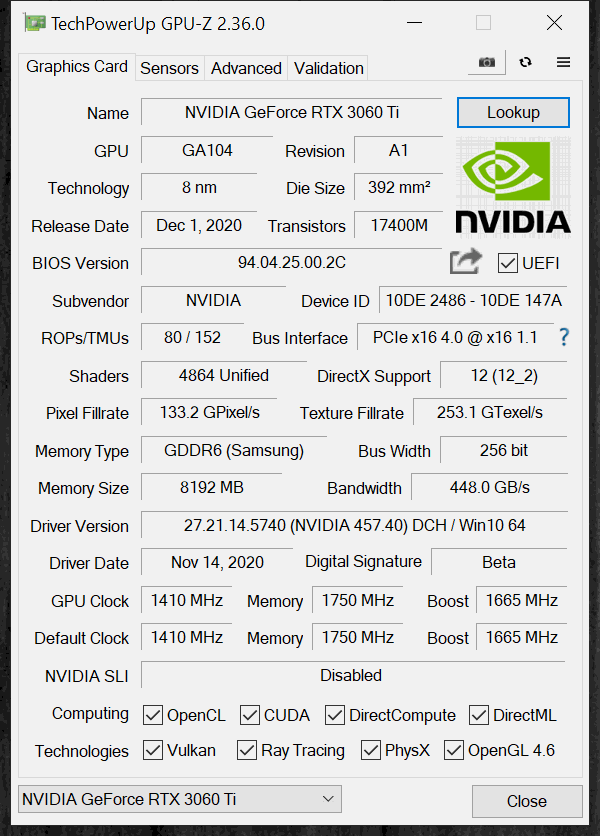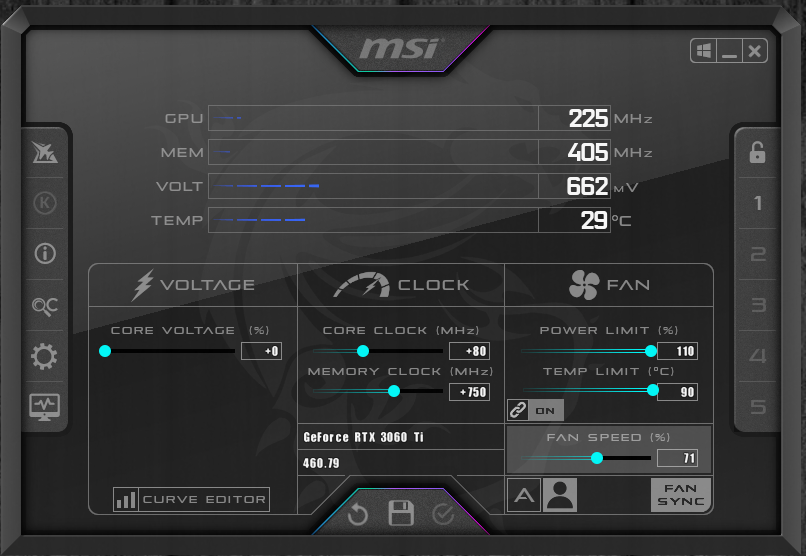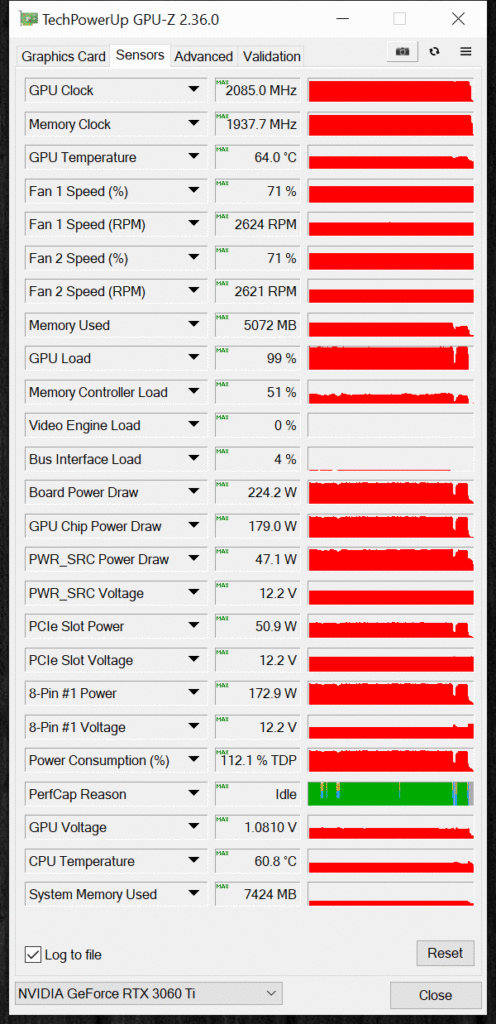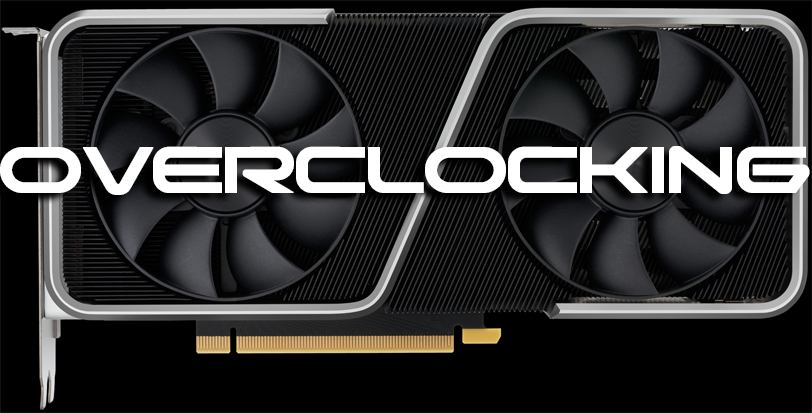
Introduction
On December 1st, NVIDIA continued launching its line of GeForce RTX 30 series GPUs/video cards. The new GeForce RTX 3060 Ti launched with an MSRP of $399 appealing to the masses. The GeForce RTX 3060 Ti replaces the previous generation GeForce RTX 2060 SUPER which was also launched at $399 MSRP in 2019. NVIDIA launched the GeForce RTX 3060 Ti stating that even though it was just $399 it had the performance to take on the more expensive last generation $699 GeForce RTX 2080 SUPER video card.
In our launch review we dove into GeForce RTX 3060 Ti Founders Edition performance comparing it with GeForce RTX 2080 SUPER Founders Edition, GeForce RTX 2060 SUPER Founders Edition, and even the AMD Radeon RX 5700 XT. The AMD Radeon RX 5700 XT also launched with an MSRP of $399, so the new GeForce RTX 3060 Ti Founders Edition is also a direct replacement and upgrade from the Radeon RX 5700 XT.
We looked at Rasterized performance at 1080p and 1440p and also Ray Tracing and DLSS at 1080p and 1440p. We found the GeForce RTX 2060 Ti FE to be a well-rounded video card, mostly keeping up with the GeForce RTX 2080 SUPER FE. However, there were a few places it slightly came in under, and so that is where overclocking can make up that difference.
That is what we are interested in here today, how much overclocking adds to the performance and how that helps it beat the GeForce RTX 2080 SUPER in every scenario. We will once again show 1080p and 1440p performance, and Ray Tracing and DLSS performance.
Just a short brief on the GeForce RTX 3060 Ti. The GeForce RTX 3060 Ti is based on the NVIDIA Ampere architecture at Samsung 8nm. It has 38 SMs, 4864 CUDA Cores, 80 ROPs, 152 TMUs, 38 RT Cores (2nd generation), 152 Tensor Cores (3rd generation). It has a GPU Boost clock of 1665MHz. It has 8GB of GDDR6 at 14GHz on a 256-bit memory bus providing 448GB/s of memory bandwidth. TGP is 200W. It supports Ray Tracing, DLSS, Machine Learning, AI, NVIDIA REFLEX, NVIDIA Broadcasting, and NVIDIA RTX IO.
How to Overclock the GeForce RTX 3060 Ti FE
Before we overclock the GeForce RTX 3060 Ti Founders Edition video card, take note that this is a uniquely designed video card from NVIDIA. Add-in-board partner custom video cards may overclock with different results. Keep in mind that the default GPU Boost is 1665MHz on this video card. Before we overclock, we need to know what the baseline GPU frequency is while gaming so we know how much of an overclock we are really getting.
In our launch review, we tested the default GPU frequency while gaming. From the graph on that page, you can see that the video card stays above 1890MHz – 1970MHz at best. This is well above the 1665MHz GPU boost. The average frequency at default turned out to be 1937MHz, so that is our baseline for overclocking. We also discovered that with GPUz the GPU Voltage went up to 1.0810V by default with GPU Boost managing voltage. The fan speeds at default hit a high of 49% with a default GPU temp of 74c. Board power Draw at default was 205.6W.
Highest Overclock on GeForce RTX 3060 Ti FE
To overclock this video card we downloaded the latest beta of MSI Afterburner, which worked fine. We were even able to unlock and monitor the GPU Voltage. However, as we have found out, it is best to let NVIDIA GPU Boost manage voltage, as increasing it can quickly exceed the TDP of the video card and harm the overall overclock. Therefore, for our overclocking today we simply left Voltage alone.
We were able to raise the Power Limit up to 110% from 100. This is a decent amount of power headroom for this GPU. For the fan speeds, we did not need to max them out at 100%. While we tried this, we found we could obtain good temperatures in the lower 60’s and a low noise profile with the fans in the 70% range. Pushing the fans to 100% did not better the overclock. Therefore, to keep the noise down, we kept them set at exactly 71% fan speed for overclocking.
As you can see, we managed to push the Core Clock up to +80 and the Memory Clock up to +750. This resulted in a GPU Boost of 1745Mhz versus 1665MHz. This also pushed the memory up to 1938MHz versus 1750MHz. That means the memory is now running at 15.5GHz versus the default 14GHz. That brings the memory bandwidth up to 496GB/s versus 448GB/s.
Ultimately, we could actually increase the memory clock speed higher. We managed to hit 16GHz on the memory, but after prolonged use, it would start to artifact. Bringing it down to 15.9GHz or 15.8GHz was more stable, and worked well. However, the more we increased memory frequency, the more it hurt and brought down our GPU frequency sustained overclock. You see, it started eating into the TDP, and then well the GPU frequency suffered. By keeping it at a more respectable 15.5GHz we managed to keep the GPU frequency a bit higher. For this video card, GPU frequency affects performance more than the memory frequency for gaming performance.
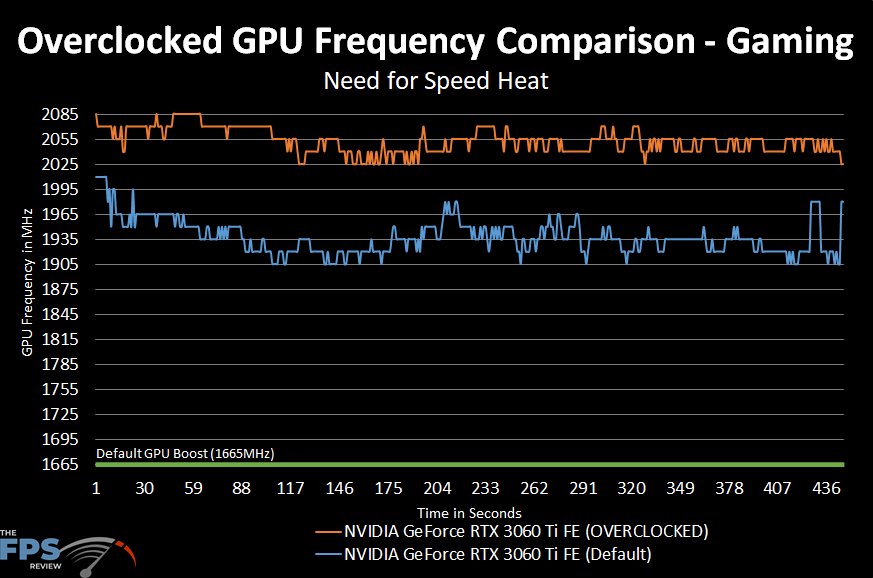
Here is what the overclock frequency looks like compared to the default frequency. You can see from this graph that overclocking has definitely improved the frequency. It has moved it up to the range of 2025MHz-2060MHz. It even peaked at 2085MHz, for a brief second.
The sustained frequency though was closer to the 2050-2055MHz range. The average frequency of all this was 2052MHz. Therefore, that is our overclock, 2052MHz versus the default 1937MHz. That is a 6% GPU clock frequency overclock or 115MHz.
GPUz
Here is the sensor data for the overclock. Note that the fans are only at 71% and yet the temperature is just 64c, so the cooling setup from NVIDIA is very good on this video card. The GPU Voltage hit a maximum of 1.0810V. Board Power Draw is 224.2W. The Power Consumption TDP is being exceeded at 112%.
The final overclock we will use for testing is:
GPU: 2052MHz
Memory: 15.5GHz

